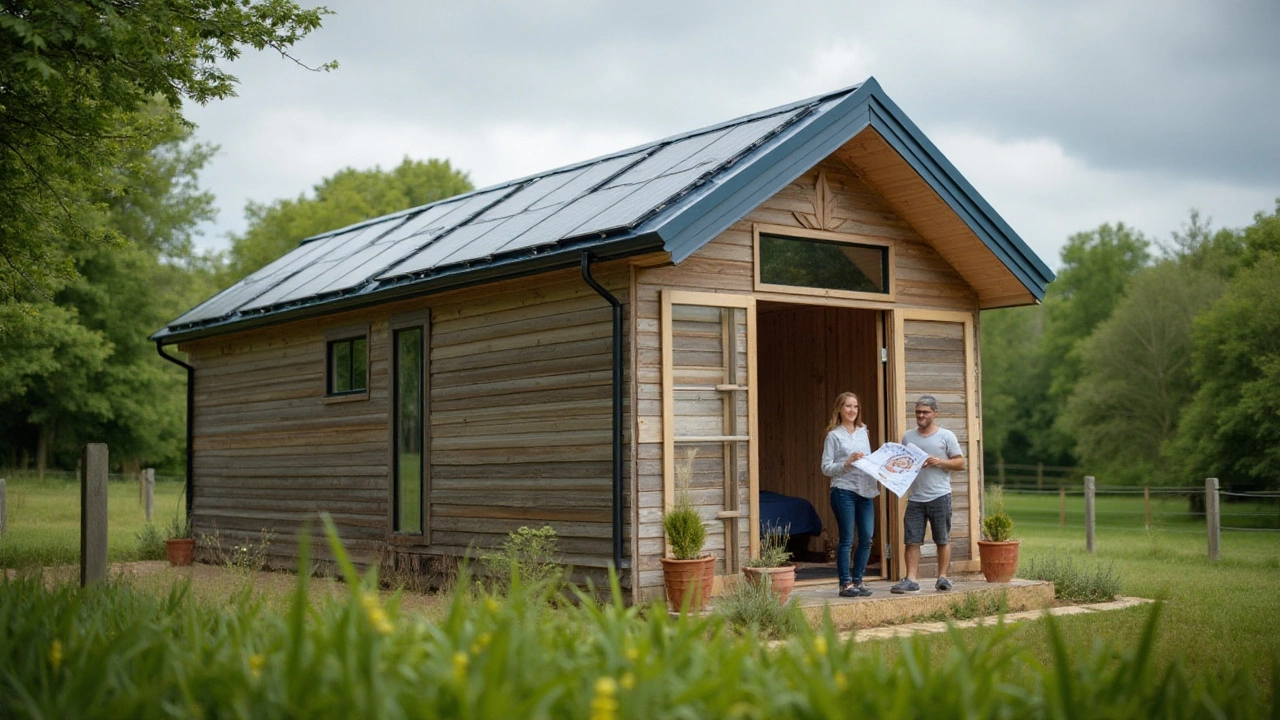Cheap Home Builds: How to Save Money Without Cutting Quality
Ever wonder how you can build a house without blowing your savings? The answer is a mix of solid planning, smart material picks, and keeping an eye on hidden costs. Below you’ll find straight‑forward tips you can start using right now, plus quick fixes for common problems like mold or foundation cracks that can drain your budget fast.
Plan Your Budget Like a Pro
First step is to write down every cost you can think of – land, permits, foundations, roofing, flooring, finishes, and a small buffer for surprise expenses. A realistic budget stops you from chasing cheap options that end up costing more later. Use a simple spreadsheet: column A for the item, column B for the estimated price, column C for the actual spend. Update it weekly so you always know where you stand.
Next, get at least three quotes for big jobs such as foundations and roofing. The post about "Foundation Problems" shows how early detection saves you from expensive repairs later. If a contractor’s quote looks low, ask for a detailed breakdown. Missing items often hide in the fine print and turn into extra charges.
Don’t forget to factor in long‑term costs. A cheap roof might need replacement in five years, while a slightly pricier, high‑quality roof can last 20. The "Is $30,000 Too Much for a Roof?" article reminds you to weigh initial spend against future maintenance.
Choose Low‑Cost Materials That Still Perform
Flooring is a big budget item, but you don’t need marble. Engineered hardwood and luxury vinyl plank, highlighted in the "2025's Top Living Room Flooring Trends" post, give a high‑end look at a fraction of the price. For walls, consider budget‑friendly paints or simple wallpaper – the "Best Wealth‑Attracting Wallpaper Ideas" piece even shows how to pick colors that feel premium.
When it comes to structural materials, concrete, steel, and wood are the backbone. The "Essential Construction Materials" article breaks down where each shines. For a cheap build, use concrete for the foundation (it’s durable and widely available) and opt for engineered wood frames instead of solid timber to cut costs without losing strength.
Watch out for moisture problems that can cause mold, especially in new builds. The "Can New Build Homes Develop Mold?" guide explains that even brand‑new houses can trap moisture if proper ventilation isn’t installed. Install cheap vent fans and use mold‑resistant drywall to avoid costly remediation later.
Storage and space‑saving ideas from the "Creative Storage Solutions" post help you keep the floor plan open, reducing the amount of flooring and finishing needed. Open‑plan designs also let you use fewer interior walls, saving on framing and plaster.
Finally, consider DIY where you have skills. Painting, laying laminate flooring, or installing basic fittings can shave thousands off the bill. Just make sure you follow safety rules and don’t over‑reach – a botched job can become another expense.
Building a home on a shoestring budget isn’t about cutting corners; it’s about making smart choices from day one. Keep your budget visible, pick materials that give the most bang for your buck, and stay ahead of hidden issues like mold or foundation cracks. Follow these steps and you’ll be on your way to a solid, affordable home you can be proud of.
Affordable Homes: A Guide to Cost-Effective New Builds in 2025
- Gavin Whitaker
- |
- |
- 0
In 2025, building a home on a budget has become increasingly feasible with advancements in materials and technology. This article explores various cost-effective home building options ranging from modular and tiny homes to the use of sustainable materials. It offers practical tips and insights into the cheapest methods to construct a home without sacrificing quality or functionality. Discover how innovative design and strategic planning can turn a dream home into a reality without breaking the bank.
View more